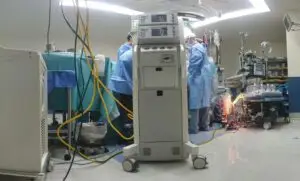
In an era where medical devices are increasingly integrated with digital technology, ensuring their safety, efficacy, and security is paramount. ISO 13485 stands at the forefront of establishing quality management systems (QMS) for medical device manufacturers, providing a systematic framework to ensure product quality and safety. However, with the advent of connected medical devices, cybersecurity has emerged as a critical component of medical device safety, intertwining with the principles of ISO 13485 in safeguarding patient health.
ISO 13485: Ensuring Quality and Safety
ISO 13485 specifies requirements for a QMS, which is when an organization needs to demonstrate its ability to provide medical devices and related services that consistently meet customer and applicable regulatory requirements. It focuses on risk management and design control activities during product development, particularly in the context of regulatory compliance. As medical devices become more interconnected and reliant on software, the scope of risk management broadens, inherently encompassing cybersecurity risks.
The Cybersecurity Connection
While ISO 13485 doesn’t explicitly cover cybersecurity, the standard’s emphasis on risk management provides a natural extension into cybersecurity considerations. The integration of cybersecurity into the QMS under ISO 13485 can significantly enhance the security posture of medical devices by:
- Risk Management: ISO 13485 mandates a comprehensive risk management approach throughout the device lifecycle. Extending this to include cybersecurity risks ensures a holistic view of all potential threats to device safety and effectiveness.
- Design and Development: The standard requires documented procedures for design and development, including validation of the design’s ability to meet specified requirements. This aligns with cybersecurity best practices, emphasizing secure design principles and validating security features.
- Supplier Management: Given the complex supply chains involved in medical device manufacturing, ISO 13485’s focus on supplier evaluation and monitoring is crucial. This includes ensuring that software and IT service providers adhere to stringent cybersecurity standards, reducing the risk of vulnerabilities in the device ecosystem.
- Continuous Improvement: A core principle of ISO 13485 is the commitment to continuous improvement, which is critical for cybersecurity. It involves regular updates, vulnerability management, and staying ahead of emerging threats.
- Training and Awareness: The standard underscores the importance of training personnel involved in the QMS. Expanding this training to cover cybersecurity awareness and practices can mitigate risks associated with human error.
Bridging the Gap with Cybersecurity Frameworks
To address cybersecurity comprehensively, manufacturers are encouraged to integrate specific cybersecurity frameworks, such as ISO/IEC 27001 or the NIST Cybersecurity Framework, into their QMS. This dual approach ensures that the quality and security of medical devices are managed effectively, addressing not only the physical safety of devices but also the protection of sensitive health data.
Regulatory Perspectives and Evolving Standards
Recognizing the criticality of cybersecurity in medical devices, regulatory bodies like the FDA have issued guidance that complements ISO 13485. These guidelines underscore cybersecurity as an integral part of device safety and effectiveness, recommending practices such as incorporating a Secure Product Development Framework (SPDF) and adhering to cybersecurity transparency in premarket submissions. The FDA’s guidance on cybersecurity in medical devices reflects a global shift towards recognizing and mitigating cyber risks in healthcare, highlighting the importance of cybersecurity risk management throughout the device lifecycle.
Conclusion
As the medical device industry evolves, integrating cybersecurity into quality management systems is no longer optional but necessary. ISO 13485 provides a robust foundation for quality management, and when combined with dedicated cybersecurity frameworks, it offers a comprehensive approach to ensuring the safety and security of medical devices. By adopting these standards, manufacturers can comply with regulatory requirements and protect patients in an increasingly digital healthcare environment.
The synergy between ISO 13485 and cybersecurity frameworks exemplifies a proactive approach to medical device safety, where quality and security are intertwined. As manufacturers navigate this landscape, adherence to these standards will be pivotal in fostering innovation while safeguarding patient health.
Contact us for help with FDA compliance for medical devices.


